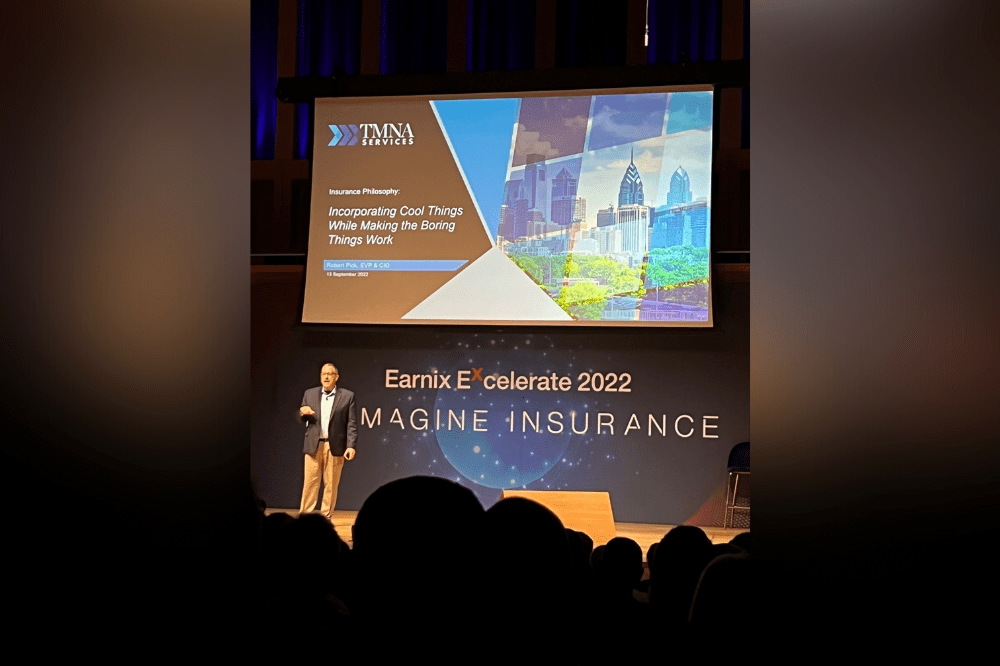What’s holding carriers back from embracing insurtech?

Pick shared his perspective on how legacy core systems and newer technologies can work together at the recent Earnix Excelerate conference in London. He said the current wave of innovation presents both opportunities and challenges, but it’s not for lack of desire that insurance companies have been slow to adapt to the newest technologies.
“Getting into our ecosystem can be particularly challenging because they are often dislocated from the incumbent systems. That means when you want to drop in that thing that does claims fraud detection or helps you price something a little bit better into this morass of highly architected core systems, it’s extremely difficult to do. There are real barriers to making this happen,” Pick continued.
“It isn’t that we don’t want to innovate,” he told the audience at Earnix Excelerate. “I was involved in a friendly chat about whether insurance spurred innovation or whether the industry’s desire to innovate spurred insurtechs – I think both are true.”
One major barrier is the lack of integration. For Pick, insurtech companies had the unique value of bringing a tech industry perspective about what’s possible. But some technology providers “don’t necessarily understand what it means to install, operate, manage, maintain, and sustain the solutions once they’re in there.”
Read more: Earnix and Guidewire partner to integrate solutions
Another hurdle is regulation. Core systems are so highly regulated and audited that implementing a new solution isn’t a matter of plug and play, he said.
“The reality is, many insurtech CEOs just don’t have enough knowledge about the insurance domain, the regulatory domain, and how we operate to be able to help us integrate this stuff. But we need to do both,” admitted Pick. “We need to keep our core incumbent systems going, and we need this innovation. Fantastic solutions are coming up all the time, and we need to take advantage of those or at least learn from that mutual basis.”
The monolith of core systems has fallen apart over the last decade, thanks to innovations by tech providers and earnest efforts by insurance companies to modernize. The core systems themselves also reaped the benefits of these efforts.
“I don’t think carriers have been sitting on their hands not wanting to transform. We’ve all been scampering and trying to figure out how to transform for many, many years. It’s just now the tech is catching up,” said Pick.
The rise of insurtechs has changed the game by forcing the modernization of core systems. Though they still consume a significant portion of capital expenditures, core systems have become easier to use and integrate. At the same time, insurers have gotten better at implementing them.
Read more: How can insurance carriers enhance their digital infrastructure?
But data remains a primary issue: collecting, managing, and analyzing it. “Core systems are limited and constrained by the quality, veracity, completeness, and availability of data,” Pick said.
“We used to talk about applications and their features and functions. Now we’re shifting to data. The applications, features, and functions follow our data, or we acquire the data we need to present our applications better. But it’s been almost a complete inversion of how we approach these things. That’s why integrations have become so important.”
Carriers and MGAs need proof of concept of any technology solution to test its operability and data integration capabilities. “If a solution cannot operate in the carrier’s data domain, it will fail, and there’s no reason to look at it. That’s one of the most critical things,” Pick said.
As the race to digitize continues, the CIO said integration and ensuring innovative solutions play well with other systems is key to driving the industry forward.
“We still need to maintain our core systems. But we also need insurtech and other innovative solutions inside and outside the industry. How we bring those together is a multidisciplinary and multifaceted effort,” said Pick.





